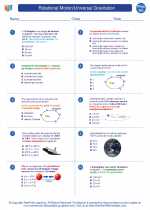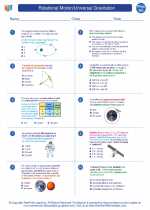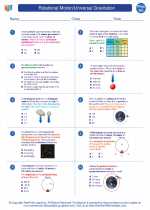Medical Imaging
Medical imaging is the technique and process of creating visual representations of the interior of a body for clinical analysis and medical intervention. It plays a crucial role in the diagnosis and treatment of various medical conditions. There are several modalities of medical imaging, each with its own principles and applications.
Types of Medical Imaging
- X-ray Imaging: Uses electromagnetic radiation to create images of the internal structures of the body, particularly the bones. It is commonly used for detecting fractures, tumors, and infections.
- Computed Tomography (CT) Scan: Combines X-rays and computer technology to produce cross-sectional images of the body. It is useful for detailed visualization of internal organs, blood vessels, and bones.
- Magnetic Resonance Imaging (MRI): Utilizes strong magnetic fields and radio waves to generate detailed images of the body's soft tissues, organs, and musculoskeletal system.
- Ultrasound Imaging: Uses high-frequency sound waves to create images of internal organs and structures. It is commonly used for imaging during pregnancy and for assessing the cardiovascular system.
- Nuclear Medicine Imaging: Involves the administration of radioactive substances that are detected by specialized cameras to create images of the body's functioning and physiology.
Principles of Medical Imaging
The principles underlying medical imaging involve the interaction of various forms of energy with the body's tissues and the detection of the resulting signals. Each imaging modality has specific principles based on the physical properties of the energy used (e.g., X-rays, magnetic fields, sound waves) and the interactions with different types of body tissues.
Applications and Considerations
Medical imaging is widely used across various medical specialties, including radiology, cardiology, oncology, and neurology. It helps in the early detection and diagnosis of diseases, treatment planning, and monitoring of treatment effectiveness. However, there are considerations regarding radiation exposure in certain imaging modalities, such as X-rays and CT scans, which require careful assessment of risks versus benefits.
Study Guide
To understand medical imaging comprehensively, students should focus on the following key areas:
- Understand the physical principles underlying each imaging modality, including the interactions of energy with the body and the generation of image signals.
- Compare and contrast the strengths and limitations of different imaging modalities in terms of resolution, contrast, and clinical applications.
- Learn about the specific clinical applications of each imaging modality and how they contribute to the diagnosis and management of different medical conditions.
- Explore the ethical and safety considerations related to medical imaging, particularly regarding radiation exposure and patient consent.
- Stay updated on emerging technologies and advancements in medical imaging, such as artificial intelligence applications and 3D imaging techniques.
By mastering these aspects of medical imaging, students can gain a comprehensive understanding of this vital field in healthcare and contribute to advancements in diagnostic and therapeutic medicine.
.◂Physics Worksheets and Study Guides High School. Rotational Motion/Universal Gravitation

 Worksheet/Answer key
Worksheet/Answer key
 Worksheet/Answer key
Worksheet/Answer key
